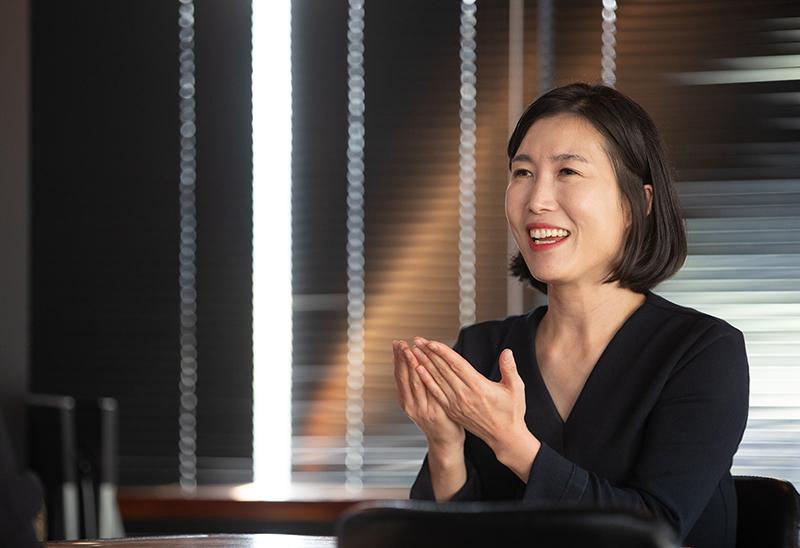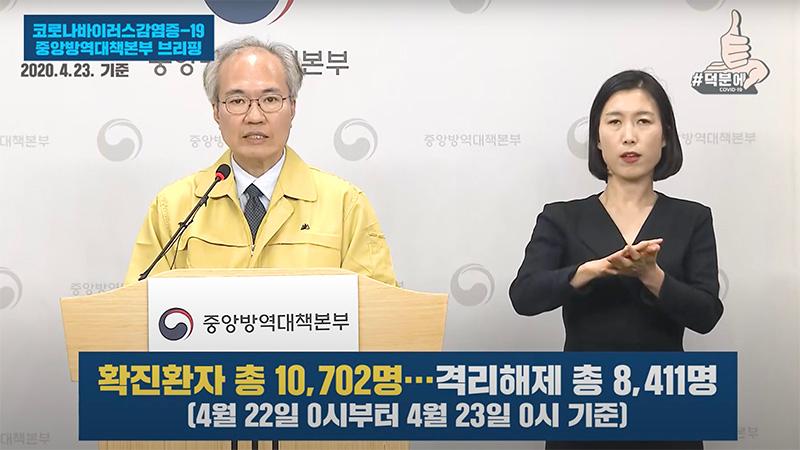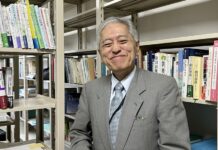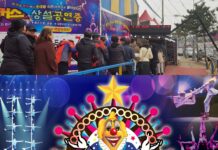| The video “Korea, Wonderland?” posted on March 17 on Korea.net’s YouTube channel attracted more than a million views four days after it was posted. The content shows brave people jointly trying to overcome the COVID-19 pandemic and helping those around them who are in a worse situation. Korea.net met such people to hear their stories firsthand. |

Ko Eun-mi is a sign language interpreter who works at the government’s regular briefings on the coronavirus disease (COVID-19). At a café in Osong-eup Town of Cheongju, Chungcheongbuk-do Province, on April 23, she said, “Expressions and mouth shapes are important aspects of sign language.” (Kim Sunjoo)
By Lee Kyoung Mi and Lee Jihae
Cheongju | April 23, 2020
The government holds two briefings daily on the novel coronavirus disease (COVID-19) — one in the morning and the other in the afternoon — on the status of and quarantine and support measures related to the pandemic.
A certain someone at the briefings busily moves her hands and face and stands next to the speaker: sign language interpreter Ko Eun-mi.
“Facial expression determines about half (of the message) in sign language, so sign language interpreters cannot wear masks despite COVID-19,” she said. “Just as tones, interjections and questions can differ depending on the situation when people who are not hearing impaired speak, expressions and mouth shapes are very important in sign language.”
“If you cover the face, you cannot understand the meaning.”
After finishing a briefing on April 23, Ko gave Korea.net an interview at a café near the Korea Centers for Disease Control and Prevention in Osong-eup Town of Cheongju, Chungcheongbuk-do Province. She said she was extremely busy lately in going to briefing venues in Seoul, Sejong and KCDC headquarters, having much to prepare for to ensure accurate interpretation given the sensitive nature of the topic.
“I have to interpret in real time through sign language things I hear for the first time,” she said. “I read all articles and data on COVID-19 before and after the briefings.”
“These days, more questions come from foreign reporters so I watch foreign news through channels such as YouTube.”
Despite her meticulous preparation, unexpected things occur on site. Ko recalled one such moment when she had to continuously interpret the names of medicines related to COVID-19 treatment that she had never heard before. So she used her fingers to convey the terms through consonants or vowels in Hangeul, English letters or numbers, but said she was dissatisfied with her interpretation.
She said, however, that she is not worn out, adding, “So many people are sending me messages of support, so that gives me strength.”

Sign language interpreter Ko Eun-mi (right) on April 23 works beside Korea Centers for Disease Control and Prevention (KCDC) Deputy Director Kwon Jun-wook at the KCDC’s regular briefing in Osong-eup Town of Cheongju, Chungcheongbuk-do Province. She is one of six such interpreters assigned to such briefings. (Screen capture from KCDC’s YouTube channel)
Ko said the sign language interpretation at regular COVID-19 briefings has been positively received by the hearing impaired.
Until recently, sign interpretation appeared in small images at the edge of the screen. “The screen was too small and made it hard for the hearing impaired to understand. But the speaker and the sign interpreter now stand side by side while making announcements. The camera captures both at the same time, so it’s easy for the hearing impaired to understand the sign language,” she said.
Ko said such interpreters are not doing community service for the deaf, but simply convey a language.
“Just as there is simultaneous interpretation in various languages such as English, Japanese, Chinese and Spanish, sign language is just another language,” she said.
km137426@korea.kr























